Status Active | Country England Previous denomination Roman Catholic Opened 1744 | |
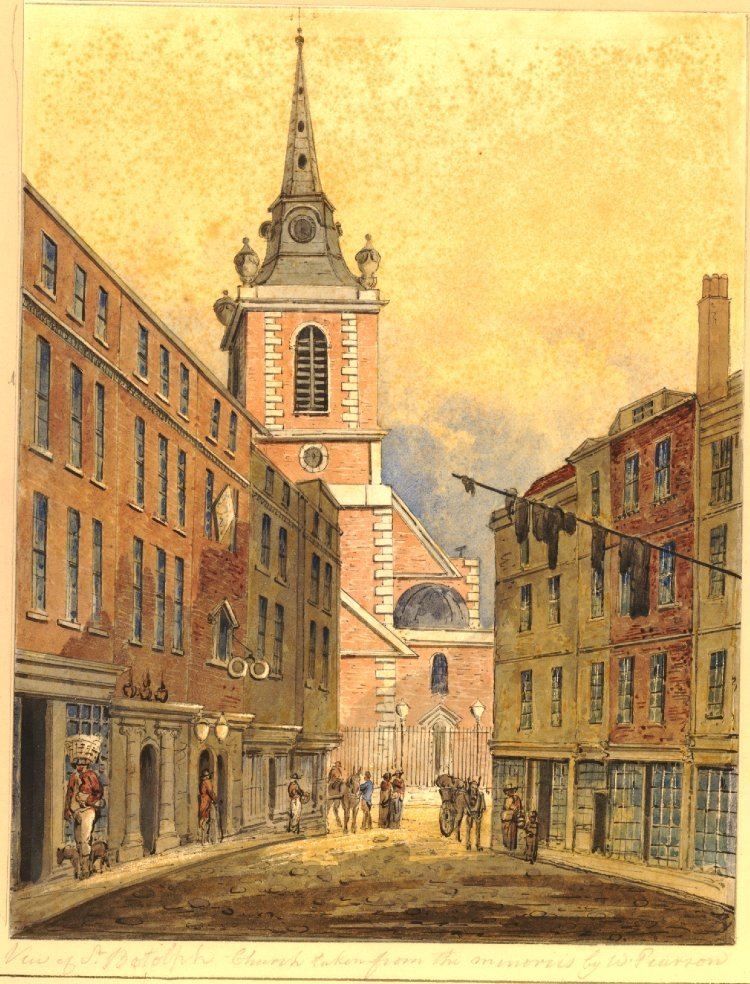 | ||
Burials Edward Darcy, Richard Farnham Similar St Botolph‑without‑Bishopsgate, St Botolph's - Aldersgate, St Katharine Cree, St Andrew Holborn, St Margaret Pattens | ||
St Botolph's Aldgate (St Botolph without Aldgate and Holy Trinity Minories in full, sometimes known simply as Aldgate Church) is a Church of England parish church in London, standing at the junction of Houndsditch and Aldgate High Street in the historic City of London. The current 18th-century church building is made of brick with stone quoins and window casings. The tower is square with an obelisk spire.
Contents
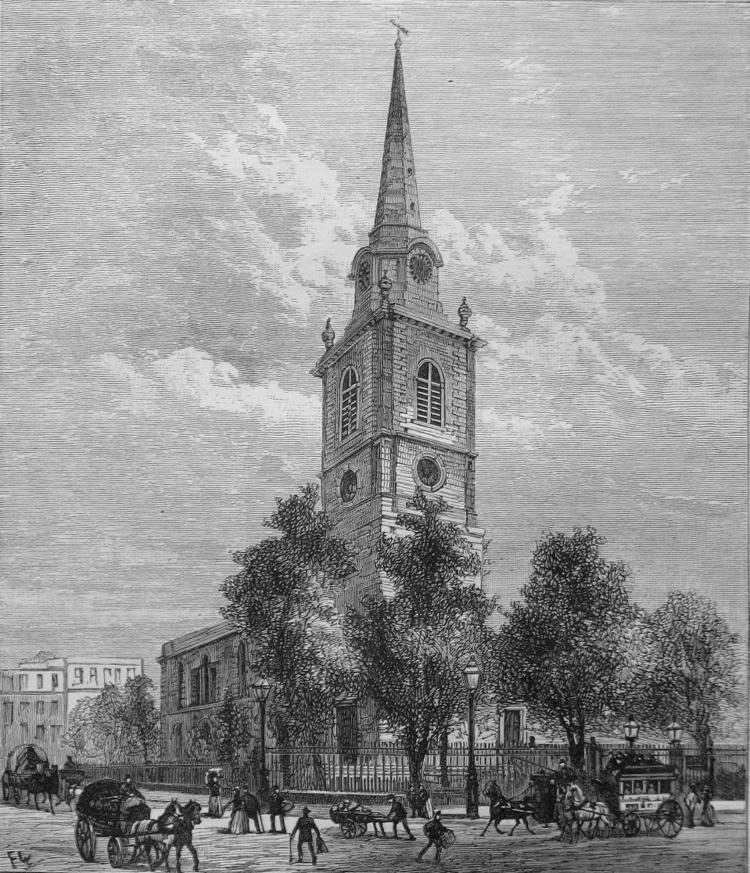
The ecclesiastical parish was united with that of the Church of Holy Trinity, Minories, in 1899.
Dedication
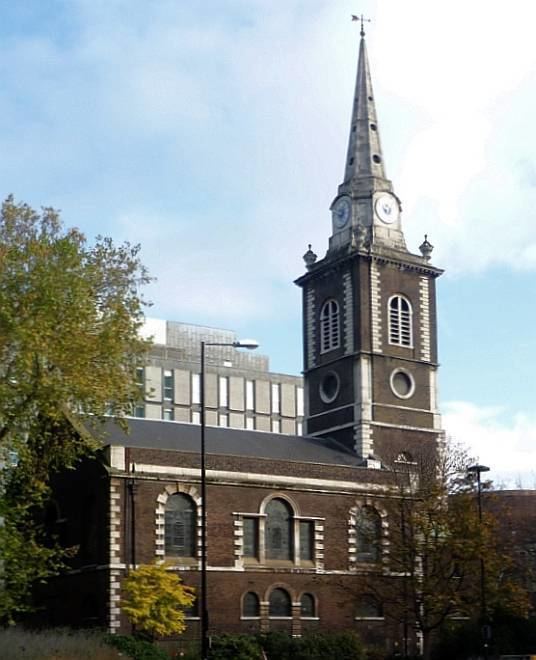
The church was one of four in medieval London dedicated to St Botolph, a 7th-century East Anglian saint, each of which stood by one of the gates of the London Wall. The others erected were St Botolph's, Billingsgate (destroyed by the Great Fire and not rebuilt); St Botolph's, Aldersgate; and St Botolph's, Bishopsgate.
Medieval church
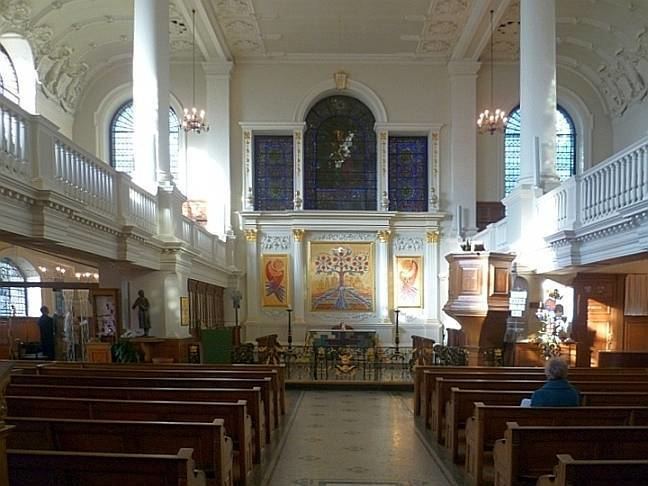
The earliest known written record of the church dates from 1115, when it was received by the Holy Trinity Priory (recently founded by Matilda, wife of Henry I) but the parochial foundations may very well date from before 1066.
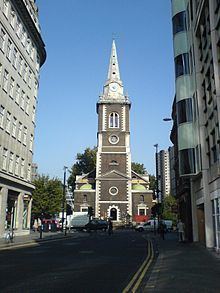
The church was rebuilt in the 16th century at the cost of the priors of the Holy Trinity, and renovated in 1621. It escaped the Great Fire of London, and was described at the beginning of the 18th century as "an old church, built of Brick, Rubble and Stone, rendered over, and ... of the Gothick order". The building, as it stood at that time, was 78 ft long (24 m) and 53 ft wide (16 m). There was a tower, about 100 ft tall (30 m), with six bells.
Present church

St Botolph's was completely rebuilt between 1741 and 1744, to a design by George Dance the Elder. The exterior is of brick with projecting quoins, stone windows surrounds and a stone cornice. The tower, also of brick, has rusticated quoins, and a stone spire. The interior of the building is divided into nave and aisles by four widely spaced piers supporting a flat ceiling. There are galleries along three sides. The church is lit by two rows of windows in each side wall, one above and one below the gallery. The monuments from the old building were preserved, and reinstalled in the new church.
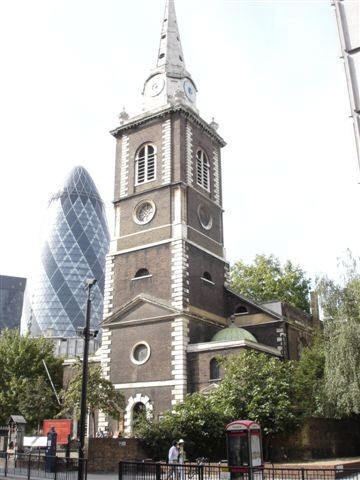
The interior was redecorated by John Francis Bentley, the architect of Westminster Cathedral in the late 19th century. The church was severely bombed at intervals during the Blitz in the Second World War and then, after its restoration by Rodney Tatchell, was much damaged by an unexplained fire in 1965, necessitating further restoration. St Botolph's was rehallowed on 8 November 1966 by the Bishop of London, in the presence of Queen Elizabeth The Queen Mother and Sir Robert Bellinger, the Lord Mayor of London, who attended in state.
St Botolph's was often referred to as the "Church of Prostitutes" in the late Victorian period. The church is sited on an island surrounded by roadways and it was usual in these times to be suspicious of women standing on street corners. They were easy targets for the police, and to escape arrest the prostitutes would parade around the island, now occupied by the church and Aldgate tube station.
The church was designated a Grade I listed building on 4 January 1950.
Organ
The organ by Renatus Harris was built in the early 18th century. It has undergone a historical restoration by the organ builders Goetze and Gwynn, and been returned to its 1744 specification using many of the original components. The organ has been described as the oldest church organ in the United Kingdom. Although there are older pipes and cases, this is the oldest collection of pipes in their original positions on their original wind chests. Because of its historic importance, the organ was filmed and recorded for the documentary The Elusive English Organ.
Donated by Thomas Whiting in 1676, it was built between 1702 and 1704. It was enhanced for the new church (the current building) by Harris' son-in-law, John Byfield, in 1740. The organ was considerably enlarged several times in the 19th century and again rebuilt by Mander Organs in the 1960s. The decision to restore the instrument was taken by St Botolph’s in 2002 after which a fundraising campaign was launched. The restoration, which took nine months, was carried out under the consultancy of Ian Bell and the workshops of Goetze and Gwynn in Welbeck, Nottinghamshire. The instrument was reinstalled in May 2006.
